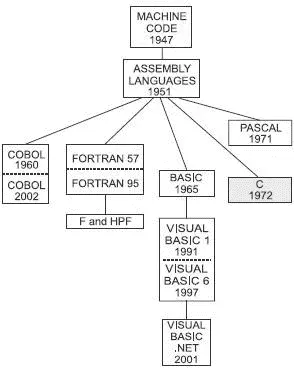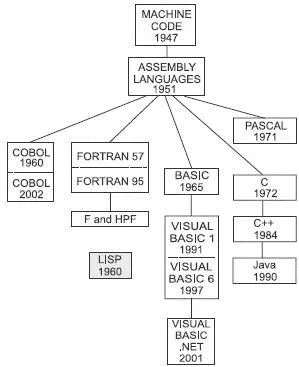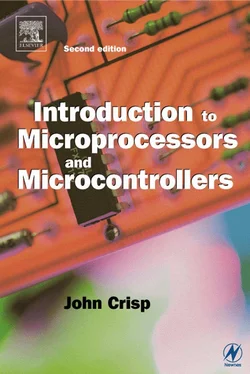John Crisp - Introduction to Microprocessors and Microcontrollers
Здесь есть возможность читать онлайн «John Crisp - Introduction to Microprocessors and Microcontrollers» весь текст электронной книги совершенно бесплатно (целиком полную версию без сокращений). В некоторых случаях можно слушать аудио, скачать через торрент в формате fb2 и присутствует краткое содержание. Год выпуска: 2004, ISBN: 2004, Издательство: Elsevier, Жанр: Компьютерное железо, на английском языке. Описание произведения, (предисловие) а так же отзывы посетителей доступны на портале библиотеки ЛибКат.
- Название:Introduction to Microprocessors and Microcontrollers
- Автор:
- Издательство:Elsevier
- Жанр:
- Год:2004
- ISBN:0-7506-5989-0
- Рейтинг книги:3 / 5. Голосов: 1
-
Избранное:Добавить в избранное
- Отзывы:
-
Ваша оценка:
- 60
- 1
- 2
- 3
- 4
- 5
Introduction to Microprocessors and Microcontrollers: краткое содержание, описание и аннотация
Предлагаем к чтению аннотацию, описание, краткое содержание или предисловие (зависит от того, что написал сам автор книги «Introduction to Microprocessors and Microcontrollers»). Если вы не нашли необходимую информацию о книге — напишите в комментариях, мы постараемся отыскать её.
Introduction to Microprocessors and Microcontrollers — читать онлайн бесплатно полную книгу (весь текст) целиком
Ниже представлен текст книги, разбитый по страницам. Система сохранения места последней прочитанной страницы, позволяет с удобством читать онлайн бесплатно книгу «Introduction to Microprocessors and Microcontrollers», без необходимости каждый раз заново искать на чём Вы остановились. Поставьте закладку, и сможете в любой момент перейти на страницу, на которой закончили чтение.
Интервал:
Закладка:
Like Fortran, it has survived by meeting a specific need and has had a series of upgraded standard versions. They refer to the date of adoption: Cobol 60, Cobol 74, Cobol 85, Cobol 97 and the new 2002 version.
A real effort was made to allow the language to be understood by those who know more about English than about programming. To this end, Cobol statements are English phrases including a verb and ending with a comma. The phrases can be joined up to form a sentence or a single statement can end with a period (full stop).
A line may read:
1 Add staff to customers to give total people.
Pascal was first designed in Switzerland in 1971 (Figure 10.7). It is mostly an academic language and has been largely overtaken for professional programming by languages such as C. When learning other languages, a short course of Pascal is often employed as an introduction. Pascal is used because it is ‘good for you’, just as it is often said that to learn European languages it is ‘good’ to learn Latin first to lay down the rules of language before starting on French, German or Spanish.

Figure 10.7 Pascal does you good
Pascal is a very structured language. A structured program consists of a series of separate, self-contained units each having a single starting point and a single exit point. The program layout looks like a simple block diagram with all the blocks arranged one under the other. Since every unit can be isolated from the ones above and below, detecting an error, or understanding a new program, is relatively easy.
Languages like Basic can use instructions like GO TO to jump to a new part of the program and this often results in what is called ‘spaghetti’ programming, making it very difficult to find a fault in the program or even to understand what the program does (see Figure 10.8). Pascal avoids this by using instructions like ‘Repeat…until’. Basic is cleaning up its act by incorporating this type of instruction into the more recent versions.

Figure 10.8 Structure and spaghetti
Apart from teaching good programming habits, Pascal was largely replaced by the language called C, invented a year after Pascal and allowing all the good practice programming methods of Pascal with a few extras (see Figure 10.9).

Figure 10.9 C
The main difference is that it is a lower-level language than Pascal which may seem a strange improvement. Its advantage is that it can control low-level features like memory loading that we last met in assembly without all the drawbacks of using assembly language. It has many high-level features, and low-level facilities when we require them and can produce very compact, and therefore fast, code.
C++ and object-oriented programming
A new version of C has included all of the previous C language and added a new feature called object-oriented programming. This version, called C++, is referred to as a superset of C (see Figure 10.10).

Figure 10.10 C plus objects and Java
Object-oriented programming is a somewhat different approach to programming. In all previous cases, a task has been set and we look at the problem in terms of what processing is required to reach the required result. In object-oriented languages we have a number of objects which can be anything from some data, a diagram on a monitor screen, a block of text or a complete program. Once we have defined our objects, we can then allocate them to their own storage areas and define ways of acting on the entire object at the same time.
As an example, if we drew a square on the monitor screen and wished to move it, we could approach this in two ways. We could take each point on the screen and shift its position and hence rebuild the square in a different position. The object-oriented approach would be to define the shape as an object, then instruct the object to move. This is rather similar to our way of handling parts of the screen in a Windows environment. We use a mouse to take hold of an object, say a menu, and simply drag it to a new position. The menu is being treated as a single lump, which is an example of an object.
All the menus have similarities and differences. Similar objects are grouped into ‘classes’. A class includes the definition and type of the data together with the methods of manipulation that can be applied to an object. In our example of a class including the menus, each specific menu is called an ‘instance’. All of a class share some properties called ‘public’ properties and are different in some way, like different text being entered, these are called ‘private’ properties. As we saw earlier, C++ is just standard C with the object-oriented extras added to it.
Although not its original destiny, Java was found to be ideal for transmitting information over the Internet. It looks, at first glance, to be similar to C++ but it has some important advantages. It is small and does not require any particular architecture and can therefore be embedded in other applications for use in a wide range of systems. This embedded Java code is called ‘Applets’ and is used in Internet Explorer and other browsers.
Fourth-generation languages are non-procedural and tend to concentrate on what the program must do rather than the mechanics of the step-by-step approach of the procedural languages. A tempting definition is to say they are the most recent, or the most popular or the ‘best’ languages. None of these definitions apply, so it may be better to stick to non-procedural as the most likely definition.
Lisp was designed about the same time as Cobol and several years before Basic. It is the work of an American, John McCarthy (see Figure 10.11).

Figure 10.11 Lisp – dealing with lists
Lisp (LISt Processing) involves the manipulation of data which is held in lists or entered by keyboard and is associated with artificial intelligence. Lisp is a function-oriented language. This means that we define a function, such as add, subtract or more complex combinations. A list consists of a series of ‘members’ separated by spaces and enclosed in brackets. Samples of lists are (2 5 56 234) or (mother father son daughter).
A simple function defined as (PLUS 6 4) would return the answer 10 by adding the two numbers. Since it is an interpreted language, the program is executed one step at a time so inputted values are used as they are entered. In some versions of Lisp, this would have been written as (+ 6 4) using the mathematical symbol.
We can define our own function by saying
(defun result (A B)(+A B))
defun = define function and A B are inputted numbers and the answers have been given the name ‘result’. So, if we input the numbers 4 and 5 we would receive the response 9. This has defined a function in which we enter two numbers A and B and they are added. We could use this to enter a list of values for A and B generating a list of all the results.
Читать дальшеИнтервал:
Закладка:
Похожие книги на «Introduction to Microprocessors and Microcontrollers»
Представляем Вашему вниманию похожие книги на «Introduction to Microprocessors and Microcontrollers» списком для выбора. Мы отобрали схожую по названию и смыслу литературу в надежде предоставить читателям больше вариантов отыскать новые, интересные, ещё непрочитанные произведения.
Обсуждение, отзывы о книге «Introduction to Microprocessors and Microcontrollers» и просто собственные мнения читателей. Оставьте ваши комментарии, напишите, что Вы думаете о произведении, его смысле или главных героях. Укажите что конкретно понравилось, а что нет, и почему Вы так считаете.












